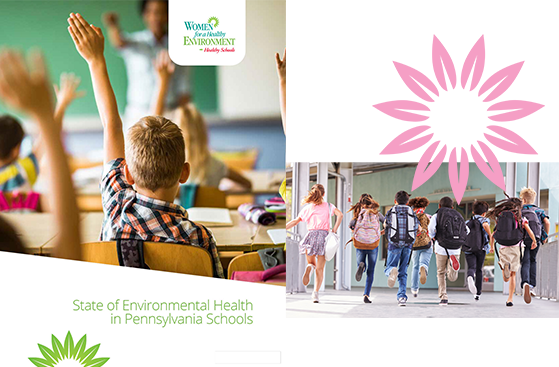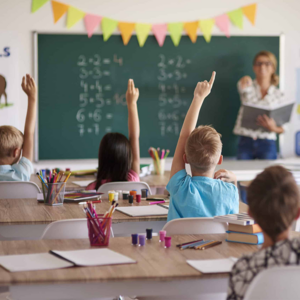State of Environmental Health
Environmental hazards in the built environment can affect the healthy development of a child, which in turn can impact their ability to learn and perform well in school.
Healthy schools are not just about our buildings, but rather about our commitment to ensuring that every child has the opportunity to succeed. That opportunity includes learning in an environment that is safe, clean, healthy, dry, and pest-free; in an environment that encourages health-promoting behaviors, where green space is accessible, and healthy nutritious food is available to all; and where mental, behavioral, and socioemotional services, are accessible to help serve the growing needs of families across the Commonwealth.
Schools are a reflection of our community values. When we invest in schools we invest in a healthy, safer, cleaner future where all can have the opportunity to thrive and succeed. The research is clear that when we act, we see a difference – improved absenteeism, improved health outcomes, healthy cognitive development, and the ability to achieve academic potential.
While there are many known health hazards presented, this report also includes preventative strategies that school districts can immediately undertake to protect students, teachers and staff from environmental harm. Healthy Schools PA offers free technical assistance and guidance to schools and should be considered a valuable partner and resource for identifying incremental steps to improve a school district’s environmental health. We work with schools to assist with everything from environmental health education, to curricula, and policy and procedure reviews that will lead to a healthier school community. We also encourage schools to participate in the “1,000 Hours a Year” program by applying for mini-grants to test for lead and radon in schools.
For far too long, PA public schools like schools across the nation, have been underinvested in. Unlike schools across the nation, Pennsylvania public schools are uniquely vulnerable to environmental hazards. The global COVID-19 pandemic has taught us, more urgently than ever, that indoor environments matter
for students’ health, safety, and academic potential. This report is a call to action. We have an unprecedented opportunity to reinvest in our schools for the long-term—to fund school infrastructure that can positively impact current and future generations of learners across the commonwealth. The challenge ahead of us is to act to ensure a healthy school for every child to grow, learn, and play.
State of Schools Report
This report is authored by Women for a Healthy Environment. It contains key findings and recommendations. to achieve healthy schools in Pennsylvania.

Here is what others are saying about this critical report and next steps:
“Schools should be a safe place for children to learn, grow and play. The average school building in Pennsylvania was built in 1964 – several years before federal laws that affect healthy indoor environments were enacted. Through science we know that exposure to lead, radon and poor air quality for example, affects the development of our children. Healthy learning environments lead to greater academic achievement. Therefore, we must invest in our schools to ensure children a healthier future. This includes taking advantage of the unique opportunity that the American Rescue Plan Act presents to address these environmental risks now.”
~Michelle Naccarati-Chapkis
Executive Director, Women for a Healthy Environment
“On a daily basis, a student’s school building has a greater effect on their body than their pediatrician. ‘The 2021 State of Environmental Health in PA Schools’ report intimately discusses this relationship by quantifying statewide environmental challenges that have implications for child health and performance. This deep dive would be valuable in any state as it provides direct evidence for action and outlines a strategy that extends beyond the pandemic.”
~Erika Eitland
MPH, ScD, Director, Human Experience (Hx) Lab, Perkins & Will and a reviewer of the report
“This report shows that many children in Pennsylvania are exposed to significant environmental hazards in their school buildings. It is unacceptable that all school buildings are not screening for and remediating these environmental hazards. This report should serve as a call to action for us to improve the environment of our school buildings and protect our children’s health.”
~Dr. Deborah A. Gentile
Allergist-Immunologist
“Every day, I see the impact that environmental hazards have in our schools and on our students, like rising asthma rates. This report underscores the importance of addressing the hazards that negatively affect children’s health and learning – and investing in solutions. We are grateful to Women for a Healthy Environment for shining a light on these issues and, through their 1000 Hours a Year Project, providing resources, technical assistance and ongoing support to help school districts in our region.”
~Britnee Weatherspoon
EdD, Social Services Coordinator/Home & School Visitor K-12, Homeless & Foster Care Liaison, Clairton City School District
